Matador Network's Blog, page 1011
September 18, 2019
Best rural hotels on Menorca island

Spain’s Balearic Islands undoubtedly have lots in common: interesting history, sun and sea, and typical foods like the ever-popular sobrasada pork sausage. But each island is also a microcosm of its own — so close yet so far from the others. Unlike Canary Islanders, people in the Balearic archipelago identify themselves with their island’s specific name and not collectively.
Among the four islands, Majorca has witnessed the development of mass tourism more than any of its little sisters while Ibiza is the young party place, and once-hippie Formentera is now a summer must for the rich and famous.
What about Menorca? Well, Menorca has the reputation of being the quieter, wilder, better conserved island. It’s the only one to have been occupied by the British in the 18th century, and since 1993, it has earned the title of UNESCO Biosphere Reserve. Nowadays, especially in high season, it’s a solid family beach holiday destination.
But with rural hotels becoming increasingly prominent in recent years, all this might be set to change. This type of accommodation could be the future for the island and a way to diversify tourism and appeal to a different demographic of travelers happy to stay further away from the playa if that still means a slice of Menorcan paradise. Here are the top ones to choose from.
1. Hotel Torralbenc

Photo: Torralbenc, Menorca/Facebook
Once a farmhouse, Torralbenc is now a luxurious accommodation less than a 10-minute drive from the popular beach of Cala en Porter on the island’s southern coast. For those who are torn between the joys of the countryside and those of beach life, its location offers the best of both worlds. Inside each room you’ll be welcomed by the scent of rosemary wafting through the air, stylish decor, neutral colors, and exposed-beam ceilings. But if you go for the pool cottage, you’ll also have your own private pool overlooking the Mediterranean Sea, smiling back at you in the distance.
Torralbenc is set in over 170 acres of wide-open countryside with farmland, fields of wildflowers, olive trees, and the characteristic Menorcan dry-stone walls. There’s also a stunning pool with sun terrace, an award-winning restaurant specializing in Basque-influenced Menorcan delicacies, and a wellness center for yoga classes or retreats — so you can say namaste in one of the most rural chic settings of the island.
Room prices in the high season start from $399 per night (including breakfast).
2. Hotel Rural Binigaus Vell

Photo: Hotel Rural Binigaus Vell/Facebook
Within easy reach of the village of Es Migjorn Gran, there’s Binigaus Vell, an authentic, restored Menorcan finca that offers a seawater pool and homestyle cooking restaurant. The building stands out from the others listed here because it is immersed in extensive rural areas once used to produce wheat and cheese. Since first opening in 2010, seven new suites with a private pool were added in 2018, and the 27 rooms are distributed between the converted farmers’ property, barn, and cowshed.
What makes this hotel unique is the fact that, reflecting the owners’ passion, it has a stable of Menorquín horses. Among many other activities, the hotel offers guided horse-riding excursions — of various levels and lengths — along the island’s >camí de cavalls. These are 125-mile-long coastal paths covering Menorca’s entire perimeter, divided into 20 marked stages. Once used for defense purposes, they’re now part of Europe’s GR footpaths and one of the best ways to appreciate Menorca’s natural and solitary beauty. If you’re not so keen on horse riding, there are also trails for satisfying hikes near the hotel, the most popular of which leads to Binigaus beach through the Cova d’es Coloms.
Room prices in the high season start from $300 per night (including breakfast).
3. Sant Joan de Binissaida
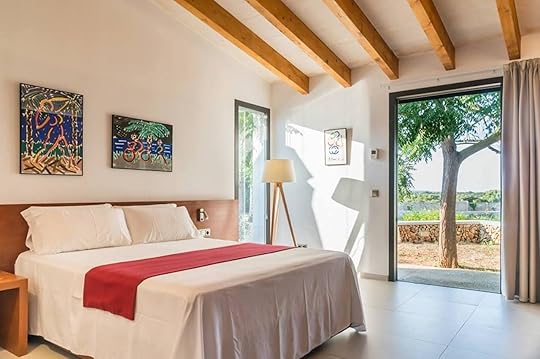
Photo: Sant Joan de Binissaida | Hotel Rural & Restaurant/Facebook
This intimate, boutique, rural hotel is on the eastern end of the island with views of the Port of Mahon. Its concept revolves around sustainable agritourism. The estate of Binissaida includes 30 acres of manicured gardens, reforested areas, fields where flocks of sheep and horses can roam free, and a working farm for the production of Binissaida extra-virgin olive oil, among other things.
The rooms, whose names are inspired by some of the greatest classical music composers, can be as lively as a Mozart piece or as grand as a Beethoven symphony. Hopefully, you fancy yourself a music lover because the hotel hosts nighttime live music events by the pool. The following morning, epicureans can book a Bini Brunch, prepared with fresh organic ingredients from the vegetable garden and seasoned with a pinch of love in the hotel’s gastro restaurant, Ses Forquilles.
Room prices in the high season start from $375 per night (including breakfast).
4. Alcaufar Vell Hotel Rural & Restaurant
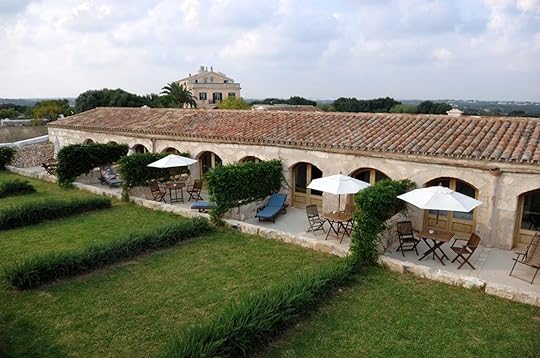
Photo: Alcaufar Vell/Facebook
Tucked away in the relaxing countryside near the southeastern beaches of Alcaufar and Punta Prima, Alcaufar Vell has been running since 1998, but its history goes as far back as the 14th century. The main building is a classic Menorcan manor house built in the beautiful marés stone that’s typically found in historical and religious architecture across the island.
The rooms and suites are located both in the manor house and in the annexed buildings. They’re tastefully furnished and, as a bonus, they all feature a jacuzzi bath and free drinks from the minibar. The link to the past at Alcaufar Vell is also apparent when you’re seated at the table, in the shade of the olive trees. Here, you can have the “Secrets of Don Joan” tasting menu, a gastronomical and historical journey to discover Menorcan cuisine and the hotel’s evolution through time.
Room prices in the high season start from $375 per night (including breakfast).
5. Hotel Rural Sant Ignasi
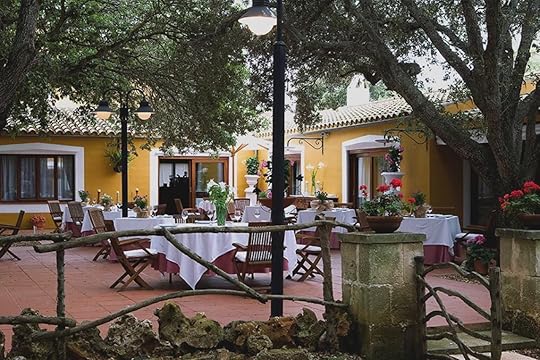
Photo: Hotel Rural & Restaurante Sant Ignasi/Facebook
Sant Ignasi is a four-star retreat in the northwest of Menorca, about a 15-minute drive from the buzzing old capital of Ciutadella. Access to the coves and beaches on the northern coast from the hotel is easy, including the rocky Cala Morell or pristine Cala Algaiarens (also called La Vall). The rooms in this hotel are spacious and classy, not lavish. Outside, the stately, mustard-yellow house stands out from the green fairytale-like background, which is home to flora and fauna like centennial holm oak woods, tortoises, and peacocks. Activities range from tennis to massages, or you can just lounge by the pool and contemplate what to have at the candlelit dinner.
Room prices in the high season start from $287 per night (including breakfast).
6. Hort Sant Patrici
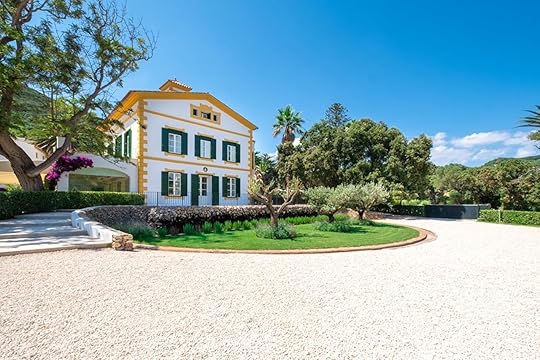
Photo: HORT SANT PATRICI/Facebook
This one is another adults-only hotel, located at the center of the island not far from Ferreries. Calling Hort Sant Patrici a rural hotel and restaurant doesn’t exactly do it justice. The main colonial-style house, Ca Na Xini, is surrounded by vineyards, and the property also has a cheese factory and cheese museum-cum-shop. While the style is definitely traditional on the exterior, the eight all-white rooms actually have a contrasting, more modern vibe.
For a true flavor of Menorca, all you have to do is join a guided tour of the winery and cheese factory, which includes a wine and cheese tasting. Hort Sant Patrici is one of the few local wineries, and its merlot, cabernet sauvignon, and shiraz wines have earned the Isla de Menorca-Vino de la Tierra quality label. Together with the wine, DOP Mahon cheese is also produced here from the milk of happy Menorcan cows that graze all year round on iodine-rich grass, which gives this queso its unique taste.
Room prices in the high season start from $248 per night (including breakfast). Adults only.
7. Hotel Rural Biniarroca
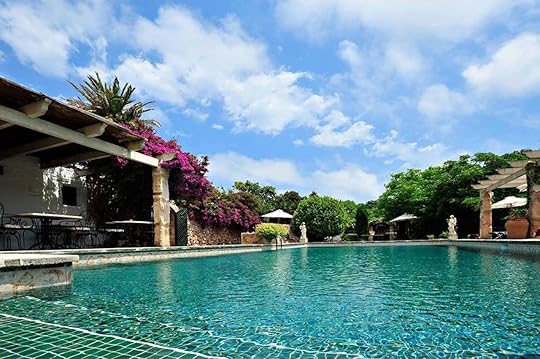
Photo: Hotel Rural Biniarroca/Facebook
In the southeast corner of Menorca is Biniarroca, very close to the capital Mahon, as well as to the airport. It’s also within walking distance of the town of Sant Lluís. The hotel is for adults only, so there’s no worry of screaming kids waking you up too early. Its romantic setting tends to attract couples more so than partiers to its bougainvillea-covered walls.
The main attractions on site are the neoclassical-style pools set in lush gardens, but there are also breezy chill-out areas and indoor library lounges to shut off your phone and disconnect for a while. The rooms are equally romantic and come with or without terrace or garden access. Fancy yourself a pomada — a refreshing drink made with Menorca’s Xoriguer gin and lemonade — to enjoy in one of these settings. The Biniarroca bistro and restaurant has superb cocktails, sometimes with an innovative twist, as well as Mediterranean and international haute cuisine specialties cooked with locally grown produce.
Room prices in the high season start from $199 per night (including breakfast). Adults only. 

More like this: Why you should consider the bathroom above all else when booking a luxury hotel
The post These rural hotels are reshaping tourism in Menorca appeared first on Matador Network.

The best traditional Finnish foods

Known as the happiest country in the world, Finland is a growing travel destination in the Nordic region. Perhaps one reason why the Finns are so happy (and a delicious reason for a visit) is the local cuisine. Finnish food is simple, fresh, and includes plenty of local ingredients sourced from the forests and lakes Finland is known for. Here are 10 traditional Finnish foods everyone should try on their next trip.
1. Salmiakki (salty licorice)

Photo: JRJfin/Shutterstock
Not to be confused with the licorice found in the US, this pitch-black candy is flavored with ammonium chloride to give it a strong, salty kick. Most people may not love it on the first try, but for Finns who have grown up eating it, salmiakki is nothing short of addictive. Even referred to as “black gold,” Finns take salmiakki with them when they go travelling.
In addition to dozens of different salmiakki candies, you’ll find the salty licorice flavor in ice cream, chocolate, fudge, and one of the most popular mediums: vodka. An easy way to sample this treat is to pop into the candy aisle of the nearest supermarket. A small box of Fazer salmiakki is a good way to start. For those looking for something super fiery, go for turkinpippuri, a hard salmiakki candy filled with spicy salmiakki powder.
2. Ruisleipä (rye bread)

Photo: Mikhail Olykainen/Shutterstock
Rye bread is so beloved by Finns that it was voted the national food in 2017 (the same year Finland celebrated its 100th year of independence from Russia). Eaten for breakfast, as a side at lunch, and as a snack, ruisleipä is a staple of the Finnish diet that’s often served with ham and cheese or a side of butter.
Be it in your nearest supermarket or in the bakery around the corner, you’ll find plenty of varieties, including reikäleipä, a big round bread with a hole in the middle, or jälkiuunileipä, a hard bread baked at a low temperature. There are also a couple of dry versions, called näkkileipä and hapankorppu, the latter known as Finn Crisps abroad. Rye bread is a good choice for those looking for a healthy option as it’s made from sourdough and is high in fiber.
3. Korvapuusti (cinnamon bun)

Photo: Mariontxa/Shutterstock
Scandinavian flavors can be sampled all around the world these days thanks to IKEA. If you’ve ever paid a visit to the food court in one of the furniture giant’s stores, you’ve probably come across the kanelbulle, a sweet roll filled with sugar, cinnamon, and cardamom. The Finnish version of this treat has a curious name, korvapuusti, which means “a slap on the ear.” No one knows for sure how this pastry got its name, but perhaps one reason is that the shape resembles a pair of ears. The cinnamon buns are best eaten fresh out of the oven, with a cup of coffee or a glass of cold milk on the side.
4. Karjalanpiirakka (Karelian pie)

Photo: bonchan/Shutterstock
Originally from the Karelia region in the eastern part of Finland, which is now part of Russia, this rye crust pastry filled with thick rice porridge has become a popular snack throughout the country. The most common way to eat karjalanpiirakka is with munavoi, a spread made out of chopped hard-boiled eggs and butter. An easy and affordable way to sample this local treat is to head to the bakery section in any supermarket and buy one that has been preheated. In addition to the rice porridge filling, you can also find pies filled with shredded carrots and rice, as well as potato mash.
5. Leipäjuusto (bread cheese)

Photo: StockphotoVideo/Shutterstock
This baked, slightly sweet cheese is a regional speciality that has become a popular dish all over the country. The cheese makes a squeaky sound when you bite into it, which explains why some Finns, especially kids, refer to it as the “squeaky cheese.” Particularly popular in the northern parts of Finland, it’s best enjoyed hot with some cloudberry jam spread on top. Bright-orange cloudberries are native to Scandinavia and can only be found growing in high altitude bogs. The taste is a mixture of sweet, sour, and tart notes, which compliments the fattiness of the cheese perfectly. Although less common, leipäjuusto can also be used in salads or even Indian dishes instead of paneer cheese.
6. Uudet perunat ja silli (spring potatoes and pickled herring)
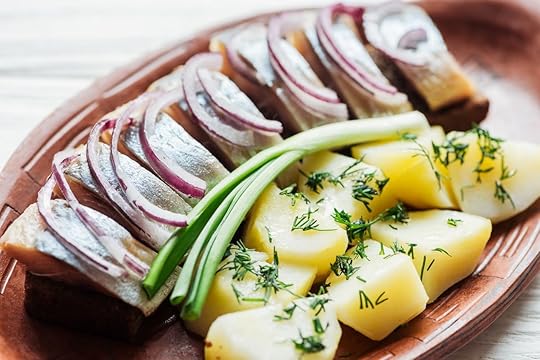
Photo: LightField Studios/Shutterstock
If you ask a Finn what their favorite season is, their answer will likely be summer. The months of June, July, and August don’t just mean warmer and longer days but an abundance of local ingredients, some of which are only available for a short period of time. One of the most awaited crops is the spring potatoes. Compared to your usual spuds, these are considerably smaller in size, have a beautiful dense texture, and a slightly sweet taste. Although Finns eat potatoes throughout the year, in summer they’re served as a main instead of the usual side dish. A typical summer meal consists of boiled spring potatoes, dill, butter, and pickled herring.
7. Poronkäristys (sautéed reindeer)

Photo: Fanfo/Shutterstock
Outside of the Nordic countries, reindeer are known as Santa’s little helpers. In Finland, reindeer are a common source of protein. Reindeer tastes great, and it’s sustainable, too. The animals roam free in the forests of northern Finland and graze on the local vegetation. Like all game meat, reindeer has a strong flavor and low fat content. The most common way is to eat it sautéed with a side of mashed potatoes and lingonberries.
8. Lohikeitto (salmon soup)

Photo: Konstantin Kopachinsky/Shutterstock
The Finnish diet is rich in fish, and the most popular fish by far is salmon. A truly Finnish way to enjoy it is to have a bowl of piping hot salmon soup with a side of rye bread. This simple soup can be made with either a clear or milky broth, and on special occasions, fresh cream is added to give the dish a more sumptuous flavor. In addition to salmon, the soup also usually contains potatoes, carrots, and leeks. Dill is sometimes added as a garnish, especially in the summertime.
9. Paistetut muikut (fried vendace)
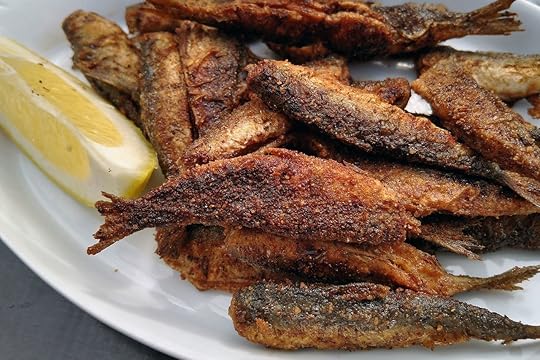
Photo: JRJfin/Shutterstock
If you’re a fan of fish and chips, don’t miss out on fried vendace (freshwater whitefish), which is served on its own or with mashed potatoes. Often sourced from one of the thousands of lakes in Finland, vendace makes up in flavor what it lacks in size. The recipe is simple: The fish is gutted, covered in a mixture of rye and plain flour, and fried in a generous amount of butter. The best, and the only, right way to eat vendace is to buy a fresh portion at a market. And don’t be surprised if a Finn takes a photo of you and asks you to say muikku — it’s the local way of saying cheese!
10. Lihapiirakka (meat pie)
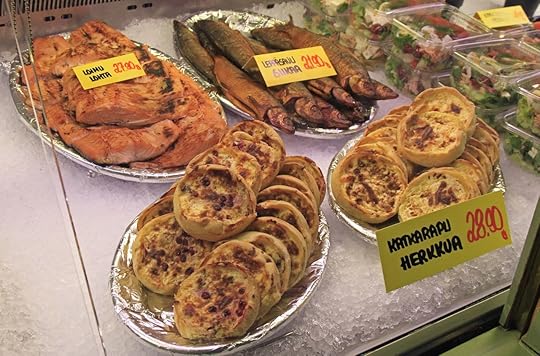
Photo: Andrew Babble/Shutterstock
This hearty pastry is another food market favorite that’s influenced by eastern culinary traditions. Made from a dough similar to that of a doughnut, the pastry is filled with cooked rice and minced beef and then fried in oil. The greasiness and saltiness also make it a go-to snack for party-goers returning home after a night out. Find lihapiirakka at one of the many late-night grill joints found all over the country. Try one filled with sausage, fried egg, and pickles, and you have yourself a full meal. Vegans aren’t left out: There is a non-meat version called vihis. 

More like this: The 5 most beautiful towns in Finland tourists miss
The post 10 traditional Finnish foods from the happiest country in the world appeared first on Matador Network.

How traveling in a group can help
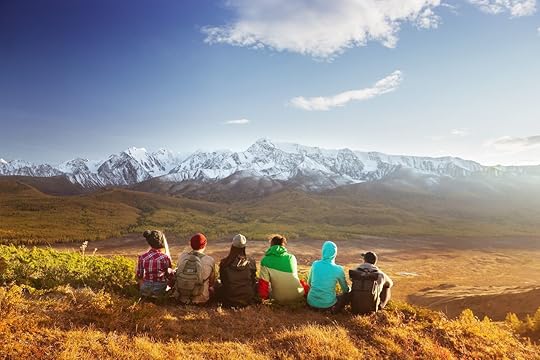
A positive outcome of this generation’s willingness to talk more openly about mental health has been the sharing of tactics used to increase one’s happiness. A well-documented strategy to having work-life balance is travel. Whether it’s joining a group trip to a new region, WWOOFing on a farm in the middle of Australia, studying abroad in Japan for a semester, meeting up with an internet penpal, or visiting a pink cafe for the ‘gram, exploring other countries is an important form of self-care.
In an attempt to see a new part of the world and work on giving myself an increase of dopamine, I joined Contiki’s Israel and Jordan Uncovered group tour. The friendly community I encountered on this journey boosted my mood to a level I hadn’t felt in a long time due to depression and anxiety. It was through this experience that I proved to myself that group travel can actually be good for your mental health.
The big sick
Booking a solo trip used to give me an adrenaline rush. If no one could get their life together enough to go with me, why would I wait around for them? Through my flight deals finesse, I saw a good amount of the world on my own and proudly gave myself the “badass, solo female traveler” title.
After a few years into my unaccompanied adventures, “life” happened. And in this case, “life” meant getting diagnosed with leukocytoclastic vasculitis, an autoimmune disease that changed so much of how I viewed myself as a healthy individual. As I sat in bed and Googled what could possibly be wrong with me, my mind went into overdrive and I worried about my future. These feelings pushed me into a dark place that I couldn’t seem to shake like I had my previous bouts with depression. I suddenly felt more alone than ever before and closed myself off to the world.
It took a year of feeling bad for myself and doing the most basic self-care before I realized more must be done to heal. My disease went into remission, but I still had the fear it could suddenly come back. I tried to travel solo to take my mind off of how I was feeling, but it didn’t work. I felt so lonely, anxious, and exhausted when I had no one there to lift me up with positive energy.
Traveling alone had been something I used to enjoy so much. It hurt to think that I would be betraying my independent spirit by giving in to the company of others. But I had closed myself off to people for too long, and I decided that I was ready to open up to connections.
Step one, wanting to change
Contiki, a tour company, recently added an adventure to Israel and Jordan, which felt like the perfect setting to see how I’d do with being a social human being again. These were two countries I had always wanted to visit and I felt that a group setting would make them more comfortable to experience.
Upon arrival, I was nervous. Nervous that I wasn’t ready yet to be surrounded by new people. As an introvert, my natural state is to withdraw from a crowd. This would be a test of how I could handle my reignited passion for life again that involved the crucial ingredient of other people.
Day one was the first chance to try out my new mission. I was extremely jet-lagged and my instinct was to return to my room and sleep. But my inner voice told me to push through. And I am quite happy I did. We took the tram from our hotel in Jerusalem to Mahane Yehuda Market for a nightcap. We were all tired and hot, but wandered around the lively local scene, taking in the smells of baklava and mint hookah smoke that filled the air. A live band playing Israeli music caught our attention and we stopped to take in the moment.
It became clear to me that group travel could be far more enriching than going alone. I fell into effortless friendships with the group so quickly. We were initially brought together because of our love for travel, but we were also curious about these two countries in the Middle East. Most of us hadn’t traveled to these locations yet, so we were all anticipating the itinerary.
Setting off through our historical tour
Our tour officially began in Jerusalem. Walking through the cobbled streets of the Jaffa Gate into the Old City united us with a melting pot of Jewish, Muslim, and Christian cultures. We got a chance to haggle in the souks, witnessed the supposed spot where Jesus was laid to rest, and ate the crispiest falafel from a hole-in-the-wall restaurant, Hummus Lina. Visiting all of these spots gave us a moment to share with each other our belief systems and brought us closer together in our first few days.
As someone who grew up as the odd one out, a big part of me was scared that I would become a loner on the trip. However, I was delighted to find out that this wouldn’t be the case. We stuck together, knowing this would create a safer and more joyful experience. This renewed a lot of my faith in people and helped me realize that there’s beauty in togetherness. This was especially evident as we trekked through the long paths of Petra and had each other’s backs (and Instagram shots) at every turn.
We headed further south in Jordan to reach Wadi Rum. This desert is famous for being a filming location for many movies, including Lawrence of Arabia, The Martian, and Rogue One. We split into smaller groups and hopped onto 4×4 trucks to take off into the red sand and rock formations. We remarked on this alien landscape and reveled in the history of the area. It was the best way to end our short time in the country before heading back to the Israel border.
Rest and relaxation with new friends
After many days in the deserts of Jordan, it was good to get some time to relax. Our first stop was right across the border in the Las Vegas-like, resort town of Eilat. We took a cruise out into the Red Sea where Israel, Jordan, Egypt, and Saudi Arabia intersect. I’m not usually one to jump off of a boat, but with the positive encouragement of my new friends, I took a literal leap and plunged into the water below. On our way to Tel Aviv, we stopped at the Dead Sea. We all giggled at the odd floating sensation and stayed buoyant until accidentally getting salt in our eyes and having to flee to the showers.
We approached Tel Aviv and it all started to hit us that our trip was almost over. We only had two more days to spend time together before departing for home. This metropolitan, modern city ended up being a great place to enjoy our final days. For the ocean lovers, the beach provided a great place to relax. For those into culture, we were able to do a tour of the famous street art around the city. To see a bit of the original Tel Aviv, we cycled on the local bike share over to Old Jaffa to see the port and flea market. The foodie scene is alive and well in the city, with tasty pita sandwich eateries such as Miznon, curated by celebrity chef Eyal Shani.
Being around good people can be a cure
The tour came to an end and I was able to do a mental health check-in to see how I had done. The past week and a half had brought me such joy and clarity of mind. I felt so much of my previous biases melting away and my social anxiety diminishing. Something as simple as going on a group trip with strangers made me feel better than I had in years. The kindness and kinship shown to me by the people on this Contiki tour gave me peace of mind in my previously clouded brain.
I left the Middle East knowing that I could move forward with my life and confident that I had healed a lot by spending time around positive people. The community I was seeking when I went on this tour exceeded my expectations and my solo travel obsession has officially been overridden by the need for connection that comes with joining a group tour. 

More like this: 7 things you need to know about the woman who travels solo
The post How group travel can actually be good for your mental health appeared first on Matador Network.

Sweden private island for sale
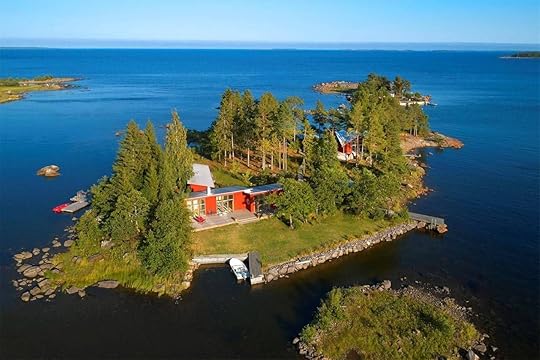
There are over 200,000 islands in Sweden, and one of them is up for sale. Gåsharsskäret, located in the outer Stockholm archipelago, has just one house, albeit a super fancy one, and it’s now on sale for $1.4 million.
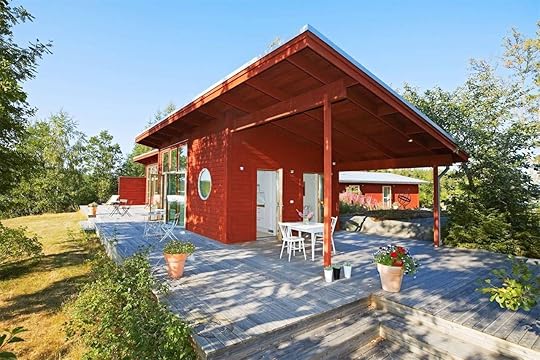
Photo: Sotheby’s International Realty
In addition to its main house, Gåsharsskäret also has a studio, guest house, beach house, and sauna (five buildings in total). The main house is on the western part of the island, with windows stretching from the floor to the ceiling for fantastic views throughout the day. The interior is decorated in a classic Scandanavian aesthetic, with heated flooring so you won’t get too cold in those northern winters. The nearby guest house, with two bedrooms, is styled similarly.

Photo: Sotheby’s International Realty
The studio on the eastern side of the island has sunrise views, and a fully equipped kitchen, bathroom, and double bedroom. And if this isn’t enough sleeping space for you and your family, the beach house to the southwest has a porch deck and two bedrooms. The different buildings are all linked by illuminated paths and surrounded by open grassy areas and sandy beaches.

Photo: Sotheby’s International Realty
You won’t be totally isolated, as the island is close to the main island of Sandön, which has schools, bars, and restaurants. You can get there via private boat.

Photo: Sotheby’s International Realty
According to the posting on Sotheby’s International Realty, “With architectural magnificence that fits in perfectly with the sensitive environment of this island, this home has an unbeatable setting where you can enjoy the evening sun as well as the liberating view out to a clear horizon.” 

More like this: The 8 coolest places in Sweden worth visiting outside of Stockholm
The post This amazing island in Sweden is on sale for just $1.4 million appeared first on Matador Network.

How to decode a wine menu

Wine menus can be daunting tomes filled with names you can’t pronounce and regions you couldn’t place on a map. It doesn’t matter which city or country you’re dining out in, the anxiety induced by an imposing wine menu is universal. Thankfully, the proper way to understand one is just as sweeping. Regardless of where you’re dining, keep regionality in mind.
“I definitely look for a wine that is specifically from the area that I am in — the more specific the better,” says Fabien Piccoli, sommelier at Brooklyn’s Antica Pesa. “You want to find the indigenous little gems that you will not find anywhere else.”
It’s not always an option to drink wine from the same region you’re in, however. That’s when a different take on regionality comes in handy.
There’s an old (and, to be honest, overused) maxim about ordering regional wine: “What grows together, goes together,” meaning the wine to order off a menu should come from the same place your food comes from. A dish filled with truffles from Tuscany, for example, goes with a sangiovese-based Tuscan wine. The saying is repeated often for a reason, though. For the most part, it works to whittle down a restaurant wine menu.
It can be a little more complicated if you’re at a wine bar and there solely for the wine. Still, the best method is to look at a wine menu like you’d look at a list of where in the world you want to travel. The wine world is, in the broadest sense, divided between Old World (traditional wine countries in Europe like France, Italy, and Spain) and New World (everywhere else). Each continent, country, and region has a specialty, and wine bars often have a focus on a particular area. A regional focus is a good sign the beverage director has found choice picks and knows the area inside and out. If a menu has a full page in the three-page menu devoted to Rioja, there’s a good chance even the cheaper bottles will satisfy.
Don’t be thrown off if you come across a region you’re not familiar with, though you wouldn’t be alone. A 2018 study from researchers at Washington State University found that “issues like a wine’s country and region of origin sometimes had more impact on a person’s willingness to pay more for a wine than taste.” The brand value of a region is often well-earned (take the classic Napa wineries, for example), but you’ll find bottles that are just as good for a better value in places where people aren’t making wine shows. So go ahead and order that bottle of Israeli wine or take the plunge on that red from Eastern Europe.
“I would say each region has at least a few wines you can easily find that are under the radar and affordable,” Piccoli says.
Once you’ve assessed the regions on the menu, there are a few further tips to make sure you enjoy that glass (or bottle) you order.
Ask the sommelier.
You should always ask the sommelier or whoever is working the bar for suggestions. Tell them your price range, whether you’re looking for something new or comfortable, and the wines you typically like to drink. They know the menu better than you do and have likely tried the wines.
“If you are not a wine connoisseur, you should definitely feel comfortable asking the sommelier about the little hidden gems on a wine menu,” Piccoli says. “They’ll be excited to show you!”
Ignore the “second cheapest bottle” myth.
Over the past couple of decades, popular belief held that people should order the second cheapest bottle of wine on the menu. It looks less cheap than ordering the lowest priced bottle, the reasoning holds. But it’s also a bogus way to find something you like. Instead, order based on a price range (and be honest with yourself and the sommelier as to what that range is).
“The quality of the wine is not always determined by its price, so you should not consider wines with lower prices as inferior quality,” Piccoli says.
In some cases, a beverage director or sommelier may put a lower markup on a lesser-known wine they truly love, while wines from regions with a reputation for quality can also sometimes see a higher markup.
Look for organic and biodynamic.
“Another indicator of quality can be when a wine is organic or biodynamic,” Piccoli says. “That means the wine was made with particular care and passion, trying to preserve the terroir and the environment. You can also look at the description, which may mention that the wine is coming from a small winery with low production, but high quality.”
The person serving wine will likely be more than happy to tell you the provenance and production methods of a bottle you’re interested in. If you don’t want to look like that person because of your drinking companions or some other reason, take advantage of the technology we have at our fingertips and Google the wine. 

More like this: Niagara wine country is the perfect region for winery hopping by bike
The post The secret to decoding wine menus has more to do with travel than you think appeared first on Matador Network.

Woman motorbiking across Vietnam

Some might say I’m an unlikely candidate to be hosting a travel series. I pretty much have zero specialized skills — I’m not a professional scuba diver (midway through certification, I vomited on my teacher’s face); I cannot pilot a plane; and I let other people set up my tent for me. And yet, I’ve traveled to over 50 countries, most of them solo.
As the creator and host of the travel series Who Knows Where, I want to prove exactly this point: Rugged beards and Y chromosomes are not prerequisites for adventure travel. In each episode, I try my hand at something I’ve never done before and show you everything that happens along the way (periods, poops, projectile vomiting, and kickass people included). And, yes, it’s okay to laugh with me or at me — I greatly enjoy making a fool of myself.
For the latest episode, I head to Vietnam to get on a motorbike for the first time and ride over 1,000 miles from Saigon (a common nickname for Ho Chi Minh City) to Hanoi. In the months of preparation leading up to the trip, this sounded like a wonderful idea. The plan seemed slightly less wonderful when I was in Saigon, on my way to pick up said motorbike. As my stomach made its way to the seat of my pants, I couldn’t help but wonder if I had I bitten off more than I could chew, and if my trip would result in some Monet-shaped roadkill. It was the closest I’ve ever come to backing out.
Luckily, the months of preparations had created a steam engine of pride and rental confirmations that no last-minute mental breakdowns could stop.
Check out the episode below to see whether or not I will crash my bike (spoiler: I do).
I’m proud to say that this episode features almost exclusively Vietnamese bands and musicians, including rock bands Gat Tan Day and CoCC, as well as worldwide rapping sensation, Suboi.
And if you’re rolling your eyes at the thought of another white woman talking about how much she loves to travel, or if you just want more butt-kicking women in your feed, check out some of these adventurers:
@thecatchmeifyoucan — in the race to be the first documented black women to visit all 195 countries
@kelleesetgo — host of Travel Channel’s Mysterious Islands
@glographics — blogging queen of The Blog Abroad
@hownottotravellikeabasicbitch — I mean, the username says it all really
@fatgirlstraveling — awesome body-positive travel-centered space created by @fromannettewithlove


More like this: The best way to motorcycle across Ho Chi Minh Road in Vietnam
The post Adventure is not reserved for highly skilled rugged men appeared first on Matador Network.

Adventure Canada expedition

Adventure Canada is offering Margaret Atwood fans an experience that’ll blow any book signing out of the water: the chance to join the award-winning author of dystopian-novel-turned-Hulu-hit The Handmaid’s Tale, recently released sequel The Testaments, and other works on an expedition around the Atlantic coast of Canada next year.
The cruise will set sail in June 2020 from St. John’s in Newfoundland, from where passengers will visit French island Saint-Pierre, a fishing village on Cape Breton Island, the historic fortress of Louisbourg, Roosevelt Campobello International Park, the Bay of Fundy, and Sable Island, home of the famous Sable Island horses. This will be Atwood’s eighteenth trip with the adventure tour company.
This Atlantic cruise comes with a fairly hefty price tag, starting at $3,013 per passenger — that said, picking the brain of a world-famous, feminist author is priceless. If you book before October 31, 2019, however, you’ll snag a 15 percent discount. 

More like this: 7 destinations that were forever changed by famous books
The post Take a trip around Canada’s east coast with Margaret Atwood, author of ‘The Handmaid’s Tale’ appeared first on Matador Network.

‘Lord of the Rings’ series in NZ
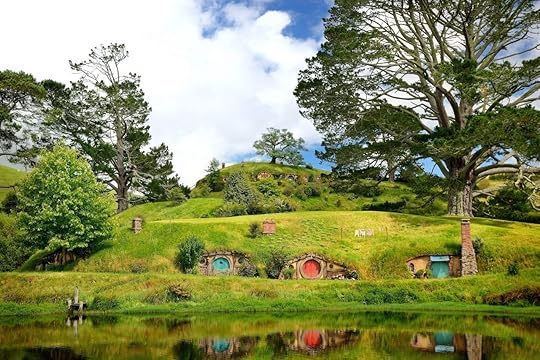
If you’ve heard about Amazon’s new Lord of the Rings TV show and were afraid Middle Earth might leave New Zealand — don’t worry. The show, rumored to be the most expensive ever made at $1 billion, will explore the storylines of Middle Earth preceding the events of the Lord of the Rings trilogy, and will look to capitalize on the success of the film series. Amazon Studios, which bought the rights to the show, has confirmed that pre-production has already started, and yes, just like the beloved movies, it’s being filmed in New Zealand.
“As we searched for the location in which we could bring to life the primordial beauty of the Second Age of Middle Earth,” said the studio, “we knew we needed to find somewhere majestic, with pristine costs, forests, and mountains.” Given the criteria, it’s no surprise that the franchise is returning to New Zealand. The film sparked a major tourism boom for the country, with visitors eager to explore the Hobbit-holes of Middle Earth for themselves.
Scotland was the front-runner for the series’ filming location, but uncertainty surrounding the Brexit controversy derailed its chances, The Guardian reported.
Details of the TV show’s plot have been kept under wraps, but Amazon has revealed that the series will be set during the 3,441-year period before the Fellowship of the Ring, perhaps focusing on the adventures of a young Aragorn. An exact air date hasn’t been announced, but it’s slated to premiere in 2021. 

More like this: Where to find New Zealand’s most heavenly, and often empty, beaches
The post Amazon’s ‘Lord of the Rings’ TV series will be filmed in New Zealand appeared first on Matador Network.

September 17, 2019
Where to travel in November 2019

Traditionally, traveling in November isn’t so much a matter of picking between warm-weather destinations but rather picking the airports with the cheapest flights to our families. And yes, it’s nice to see family and enjoy the communal bounty that is Thanksgiving. But November has 30 days, and Thanksgiving is but one of them, leaving a whole month of other places to visit.
So if you’ve got the time — and the space in your travel budget — November can be one of the best travel months of the year. Most people are saving their travel for the holidays, and you can still catch fall colors at lots of places with low rates late in the shoulder season. Here are a dozen places worth checking out once you’ve booked your trips to see relatives. Or if you’re planning to avoid them altogether.
1. Fort Myers/Captiva Island, Florida
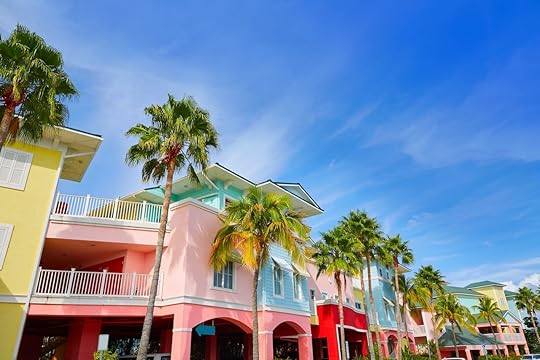
Photo: lunamarina/Shutterstock
Around this time of year, pretty much anywhere in Florida is going to be a good idea, and the Gulf of Mexico beaches along the state’s southwest coast are among its most picturesque. November begins peak bird-watching season, best done in the J.N. Ding National Wildlife refuge. When breaking from birding, check out the park’s educational “Learning Lavatories,” which have topped many best bathroom lists since they were installed last year.
This November is especially fantastic as Fort Myers and Captiva welcome the 2019 Hobie Cat World Championships from November 1 to 16. The epic sailing races will be the first race of their kind held in America in 35 years, where sailors will race identical 16-foot catamaran Hobie Cats just off Sunset Beach by day. And bring some of the best nautical parties in the world at night.
2. British Virgin Islands
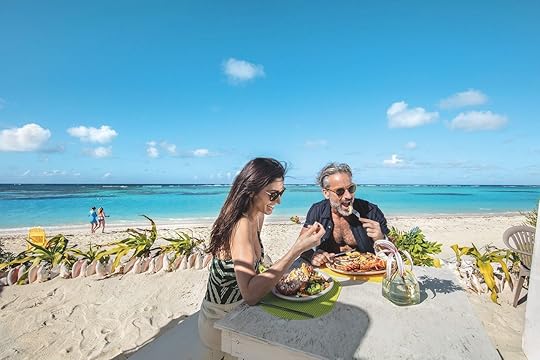
Photo: British Virgin Island Food Fete
The emerald mountains and turquoise waters of the BVI shine especially bright in November, when sailing season begins and the islands’ numerous sail-up resorts fill with wintertime visitors. But this November, it’ll also be one of the world’s top destinations for foodies as the islands host their sixth annual Food Fete. The month-long food festival brings chefs from all over the Caribbean and the United States to the BVI, this year featuring Miami’s Adrianne Calvo, Lamar Moore of Chicago’s The Swill Inn, and John Mooney of Bidwell in Washington, DC.
Food Fete runs from November 7 to December 1, highlighted by events like the Taste of Tortola on November 9 where the island’s top restaurants will all be on hand. Rum fans can try over 280 rums at the Cooper Island Rum Festival on the 16th. After a trip to the famous boulders at The Baths, visitors can enjoy live jazz from Arturo Tappin at the Taste of Virgin Gorda on the 23rd. Then finish the month off scarfing Caribbean lobster at the Anegada Lobster Fest on November 30 and December 1.
3. Chiang Mai, Thailand
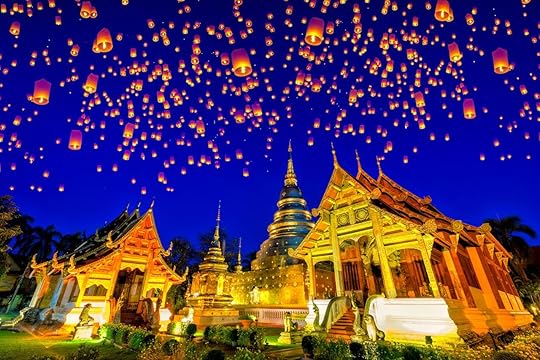
Photo: Travel man/Shutterstock
November is lantern festival season in Thailand, where two festivals — Loi Krathong and the Lanna festival Yi Peng — draw thousands of visitors and locals to release handmade lanterns into the air and the Ping River. The tradition symbolizes new beginnings and the warding off of bad luck and is a magical spectacle of traditional Thai culture.
While seeing the lanterns is a unique experience, once across the Pacific you may want to experience more of the country. Intrepid Travel runs an eight-day Explore Northern Thailand tour, where you’ll begin in Chiang Mai at the lantern festival, then venture through the rest of the region visiting ornate temples, ancient ruins, and fragrant markets.
4. Western Australia

Photo: Campbell Jones/Shutterstock
Not that we’re ever ones to besmirch turkey, stuffing, and pumpkin pie, but if your November tastes run a little more varied and you’re not visiting family for the holiday, Western Australia should be on your list. From November 8 to 17, the vast state welcomes the Western Australia Gourmet Escape. The 10-day bacchanal will be held in various locations around the state, including a first-time stop in the scenic Swan Valley, the state’s largest wine region and home to some of the country’s most famous producers.
As if dining on fine food in the Australian countryside wasn’t enough, this year’s festival is headlined by Momofuku’s David Chang, who brings his creations to the Gourmet Beach BBQ at Castle Rock Beach in Dunsborough on the 15th. Perth, the state’s largest city, will also host a massive Chinese banquet from Danny Bowien and Malcolm Chow, as well as George Cooper’s vegetable degustation featuring vegetables from his own farm.
5. South Andros, Bahamas
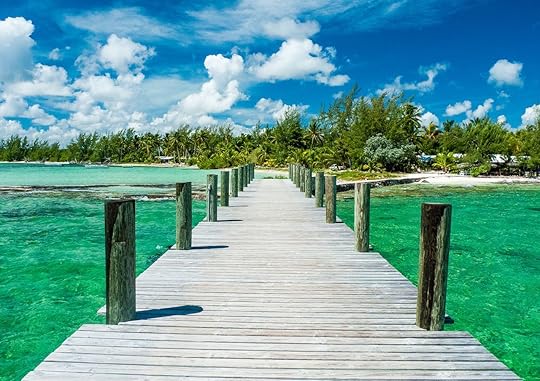
Photo: Troutnut/Shutterstock
If you’re not big into Caribbean geography, The Bahamas is actually made up of 700 islands, a large number of which weren’t too badly damaged by Hurricane Dorian. And visiting the rest of those islands is the best thing you can do to help this country recover. South Andros, which hasn’t seen much tourism historically, is welcoming its first new resort in two decades this month with the opening of the 18-suite Caenula Mar. You may recognize it from HGTV’s Island of Bryan, which chronicled the resort’s transformation from 1960s relic into luxe hidden gem.
This tiny island 20 minutes by plane from Nassau is still relatively uninhabited, though it has all the white sand and turquoise water one imagines in a Caribbean vacation. As it sits along a relatively unspoiled section of the world’s third-largest barrier reef, South Andros offers some of the best and least-crowded dive sites in the region, as well as undisturbed snorkeling and fishing for those who don’t dive.
6. Tucson, Arizona

Photo: VIKVAD/Shutterstock
Tucson is about as close as you’re getting to experiencing Day of the Dead without crossing the border to Mexico. During All Souls Procession Weekend from the 2nd to the 3rd, the city’s streets fill with skull-painted revelers holding posters of loved ones who have passed on and decked out in traditional costumes. It’s an authentic, organic celebration that wasn’t designed as a tourism destination but now brings 150,000 participants every year.
Outside the festival, you can find out why Tucson was named a UNESCO City of Gastronomy in 2015 at the Taste of the Desert on the 2nd. This month is also ideal for outdoor adventure in Southern Arizona with high temps in the mid-70s. This means comfortable hikes up finger rock for sweeping desert views or pleasant leisurely strolls along the Rilliro Riverbed. You can also go climbing through the canyons in one of five mountain ranges surrounding the city, or get deep underground in Kartchner Cavern State Park.
7. Sonoma County, California

Photo: Sonoma County Tourism
What would Thanksgiving be without Good Ole’ Charlie Brown serving pretzel sticks for dinner and Peppermint Patty learning the real meaning of Thanksgiving? And, sure, you could just sit back and wait for a rerun of a Charlie Brown Thanksgiving to come on. Or you could head to Santa Rosa, where the Charles Shultz museum is debuting Hidden Treasures: Unseen Originals from the Collection with all kinds of never-before-seen original Peanuts comics and memorabilia.
Some people, however, may not choose to base their November travel plans around cartoons. And for them Sonoma offers its annual Wine and Food Affair, where guests can sample their way through pairings in the Alexander, Dry Creek, and Russian River valleys beginning on the 3rd. It’s also the height of another kind of harvest season in Sonoma, where farmers are picking squash, pumpkins, and apples, and restaurants have menus loaded with them all. Then Dungeness Crab season at the end of the month brings a whole different kind of harvest to the area.
8. Bhutan

Photo: Khanthachai C/Shutterstock
How much do you really know about the endangered Black-Necked Crane. Absolutely nothing? Cool, well come the end of November you can be a downright expert when you head to Bhutan’s Phobjikha Valley. That’s when the people of this region hold an annual festival to honor the crane — which migrates here from Tibet in winter — including bird-themed dances, crafts, and games, as well as special events at the Black Neck Crane Centre.
But perhaps traveling halfway across the world for a single day of bird festivities seems a bit much. So might we suggest jumping on Red Savannah’s Bhutan from Paro to Jakar tour, which spends a few days in the valley for the crane festival but also takes you across breathtaking Himalayan passes to sacred sites like Burning Lake and into temples dating back over 500 years.
9. Kailua-Kona, Hawaii
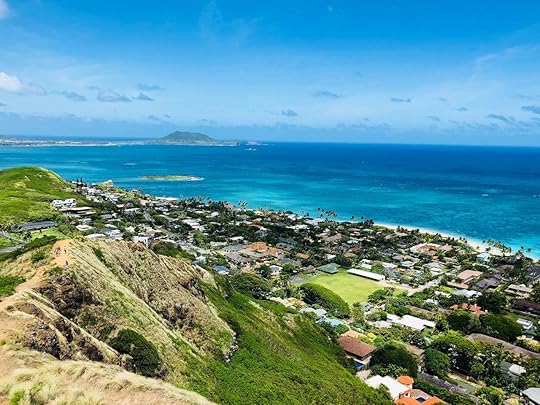
Photo: Yefimova Olena/Shutterstock
The Big Island during shoulder season is a nice respite from the hordes of tourists, when the kids are in school and holiday crowds have yet to arrive. You’ll have much of Volcanoes National Park to yourself, as well as the surf breaks at Banyans and Kahaluu. Beyond volcanoes and big waves, the Big Island is also known for its coffee, and November is prime time to come and experience it.
From November 1 to 10, the Kona Coffee Cultural Festival takes over the city, with everything from coffee educational programs to barista competitions at night. The festival kicks off with a colorful lantern parade, complete with traditional dancing and music. There’s a coffee marathon and half-marathon on November 9, which covers much of the same course as the famous Ironman. And the whole thing finishes with a Taste of Kona where food and coffee combine for one of the islands’ best culinary events.
10. Okayama, Japan

Photo: kawaken/Shutterstock
Leaf-peeping season might be coming to a close in the US, but if you’re willing to fly a little bit you can catch some of the most spectacular fall colors in the world in the land of the rising sun. Some people say the changing maple and gingko trees are actually far more vacation-worthy than tourist-saturated cherry blossom season. And while Kyoto gets most of the fall color visitors, the Setouchi Region and Okayama have far thinner crowds and far thicker foliage.
If gazing at nature’s best work isn’t enough, November also hosts the final month of the Okayama Art Summit, a two-month international expo curated by French artist Pierre Huyghe. The city is filled with contemporary installations and exhibitions in multiple venues, making Okayama one of the most visually stimulating places in the world this month. Take a room at the Tsuyama hotel, and you can score an open-air bathroom with a private terrace from which to overlook the city in all its color-filled splendor.
11. Berlin, Germany

Photo: turtix/Shutterstock
Hard to believe that it’s been 30 years since Scorpions recorded “Winds of Change.” One of the events that most inspired it, the fall of the Berlin Wall, was also 30 years ago this November, and the city will be commemorating the anniversary of its destruction from the 4th to the 10th. The main event will take place on November 9 — the day the wall fell — when concerts will erupt in parks, public spaces, and arenas citywide.
The rest of the week will be a fascinating look at the wall’s history and the art it inspired, with art installations, movies projected over building walls, concerts, and lectures. It’s also a good time to visit some of the historic museums that tell an all-too-recent history, like the Topography of Terror museum in the city’s old Gestapo headquarters. Or the Checkpoint Charlie museum, where you’ll learn the sacrifices people made to try and get from one side of the wall to another.
12. Jackson County, North Carolina

Photo: TheBigMK/Shutterstock
With the live music and endless beer in Asheville, sometimes people forget the rest of mountainous western North Carolina can be just as beautiful a fall escape. For a less-crowded, late-fall, bright-color alternative, look to the towns of Cashiers, Cherokee, Dillsboro, and Sylva, collectively the hubs of Jackson County. The towns sit between the entrance to Great Smoky Mountain National Park and the highest point along the Blue Ridge Parkway, both offering the region’s best views of the seasonal foliage. You can also visit Shadow of the Bear, a lookout point off highway 64 where during this time of year Whiteside Mountain appears to cast a perfect shadow of a black bear from about 5:00 to 6:30 PM.
Jackson County also has its own Ale Trail with 10 breweries between the four cities, though we’d suggest limiting it to one city at a time. You can also visit film locations around the area, including the downtown stand-in for Ebbing in Three Billboards Outside Ebbing, Missouri in Sylva. And the High Hampton Inn, site of the 2017 remake of Dirty Dancing. 

More like this: The 25 places you need to travel to in 2019
The post The best places to travel this November appeared first on Matador Network.

Saxon Switzerland National Park
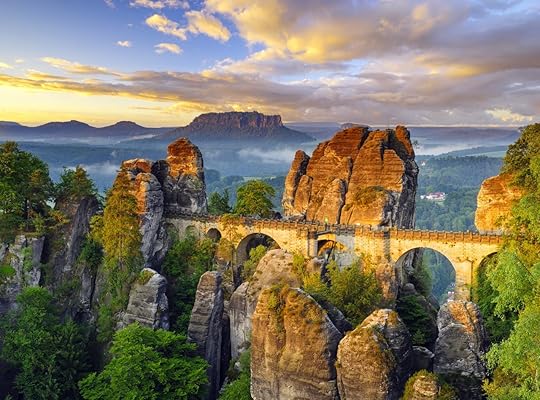
Saxon Switzerland National Park is a magnificent nature reserve that suffers from mistaken identity. You’d be forgiven if you thought it was in Switzerland, but you’ll actually find this forested, rocky wonderland in eastern Germany on the border with the Czech Republic. Saxon Switzerland got its name from two Swiss men who explored the area in the 18th century and were reminded of their home country. Although established in 1990, the park’s 36 square miles of land still feel relatively undiscovered by tourists — which is just one of many reasons why Saxon Switzerland is a hiker’s dream.
The landscape is one of the most unique in Europe.
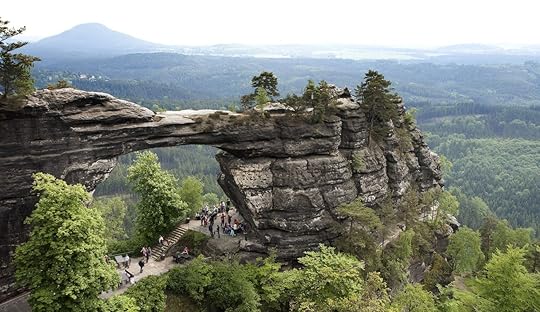
Photo: Tomas Skopal/Shutterstock
There’s no shortage of natural beauty in Germany, but Saxon Switzerland National Park brings something special to the table. The park is best known for its massive stone monoliths that jut skyward throughout the forests. These towering columns are made of sandstone and have been weathered by the elements since the Cretaceous Period. They create a playground for hikers, with deep canyons and caverns for those at their base and incredible lookout points for those on top. No other nature park in Europe has landforms like these.
Beyond the monoliths, Saxon Switzerland is a grab-bag of terrains. While on the trail, you’ll explore forests, lakes, rivers, waterfalls, valleys, cliffs, slot canyons, and caves. If you’re hiking there for the first time, sudden changes in the landscape can take you by surprise. You never know what might be around the next corner, making it an exciting place to hike.
Trails are many, and tourists are few.

Photo: DZiegler/Shutterstock
While Saxon Switzerland isn’t completely undiscovered by tourists, they seem to be quite selective about the areas they explore. Within the park, there are a handful of better-known tourist attractions, including the Bastei Bridge, Königstein Fortress, and the remains of Neurathen Castle. Visitors tend to congregate around these sites, and while they’re definitely worth a visit, they pale in comparison to Saxon Switzerland’s real highlights: the hiking trails.
With over 620 miles of trails included in the park’s network, it’s not uncommon to have the path all to yourself. Some of the more popular routes have tight, enclosed areas at the summit that you’ll likely have to share with others, but that’s about as crowded as it gets. Especially on longer and more difficult hikes, there’s a good chance you’ll be discovering the best of the park without having to share it with anyone else.
The diversity of hiking trails is staggering.
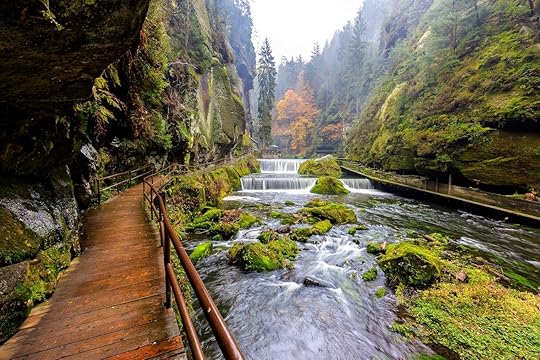
Photo: rphstock/Shutterstock
Whether you’re a brand new hiker or a seasoned pro, Saxon Switzerland has something for everyone. Some trails are as simple as wide, flat paths through lovely wooded areas. On other trails, you’ll have steep, narrow ascents involving stairs, ladders, and footholds. You can find everything from leisurely 30-minute strolls to strenuous, multi-day treks inside the park.
The good news is that no matter which route you decide to take, nearly all of Saxon Switzerland’s hikes will reward your efforts with marvelous views. Your preference and level of experience in the outdoors are essentially irrelevant here, and you’re all but guaranteed a good hike.
It’s a paradise for mountain bikers and rock climbers, as well.
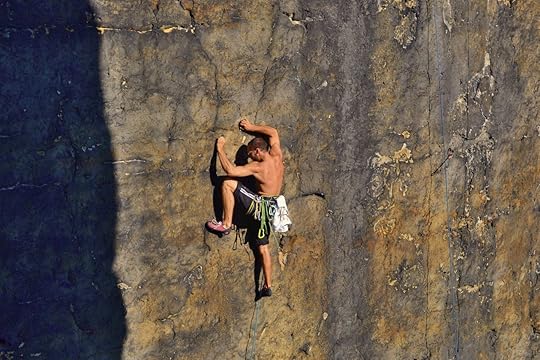
Photo: Annari/Shutterstock
Beyond hiking trails, there are cycling routes with over 30 miles of tracks open to mountain bikers. You can also rent mountain bikes in the nearby towns and even organize a mountain biking tour. Hotels and other stores also rent cruiser bikes to explore the area.
With over 1,100 free-standing rocks and a network of 17,000 climbing routes, bouldering and rock climbing enthusiasts will never run out of places to explore. If you were to somehow exhaust all of your hiking, biking, and climbing options inside Saxon Switzerland, you could simply cross the border and explore Bohemian Switzerland, the park’s Czech counterpart.
It’s easily accessible but still feels remote.

Photo: Jan Nedbal/Shutterstock
One of the best things about Saxon Switzerland National Park is its ability to feel peacefully remote while being easily accessible from a number of major cities. The park is only an hour away from Dresden and is also easy to reach from Berlin (a three-hour drive), Leipzig, and Prague. Driving in is straightforward, as is taking the train. In addition, the park’s towns have an interconnected, eco-friendly public transport system.
The park has no official entry points and no entrance fee, making it even more accessible to visitors. You can approach it from any direction and don’t need to go far before you’ll arrive at your first trailhead or point of interest.
The nearby towns are peaceful and picturesque.

Photo: Mariia Golovianko/Shutterstock
Once you arrive, you’ll feel like you’ve stepped back in time to a simpler, more tranquil era. Restaurants, stores, and homes are adorned with dark timbers typical of old German architecture. In sleepy towns such as Rathen, Königstein, or Bad Schandau, the pace of life seems to slow down, creating the perfect relaxing atmosphere to enjoy between hikes. Even better, the nearest trailheads are often only a quick walk or drive away.
The best hiking routes in Saxon Switzerland

Photo: DZiegler/Shutterstock
1. Schrammsteine
Distance: 4.5 miles or two hours, moderate

Photo: DZiegler/Shutterstock
If you plan on hiking Schrammsteine, make sure you’re not afraid of heights. After a brief flat section at the beginning, you’ll ascend clanking metal stairs and ladders bolted into the rock to reach the precarious lookout point at the top. Being the tallest landform in the immediate area, Schrammsteine will allow you to see miles and miles of the Elbe River, as well as jade-green forests, rolling hills, and more monoliths in all directions.
2. Bastei Bridge and Swedish Holes Loop
Distance: 3.9 miles or two hours, easy
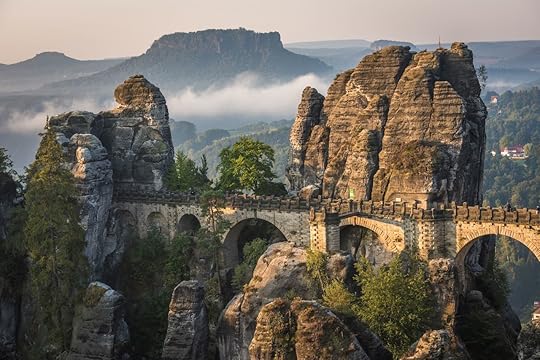
Photo: javarman/Shutterstock
Although one of the most touristy areas in the park, the Bastei Bridge is a must-visit. On your hike, you’ll pass through the remains of an old castle and its abandoned stables to cross the Bastei Bridge on foot. While there, make sure to hike the little offshoot trails in the surrounding area for panoramic views of the bridge. The Swedish Holes — narrow slot canyons enveloped by moss and tiny, trickling waterfalls — are right nearby. For the best experience, hike them from high to low elevation and stop to enjoy the earthy smells and muffled sounds as you go.
3. Himmelsleiter
Distance: 8.7 miles or 4.5 hours, strenuous
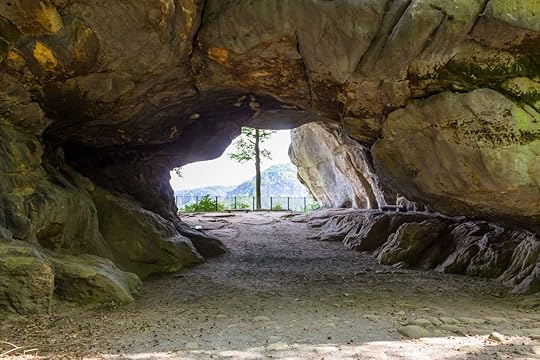
Photo: kritzeltheartist.com/Shutterstock
Himmelsleiter is one of Saxon Switzerland’s best full-day hikes. You’ll squeeze through slot canyons and tiptoe along cliff edges to the trail’s summit, Schneiderloch, for views that stretch as far as the Czech Republic. Along the way, you’ll cross waterfalls, scurry through caves and archways, and give your legs a workout on an endless set of narrow stairs right before the summit. The highlight of this route is Kuhstall, the park’s largest cave.
4. Malerweg
Distance: 70 miles or eight days, moderate to strenuous
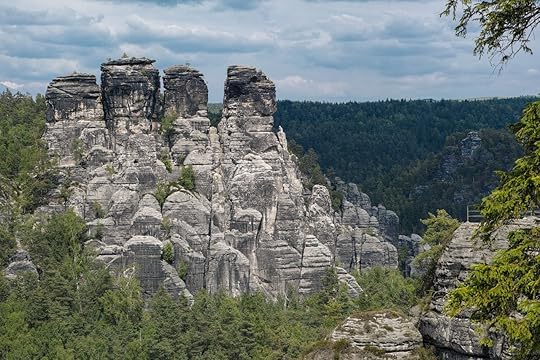
Photo: scimmery/Shutterstock
If you want to complete a long-distance hike in Saxon Switzerland, hike the Malerweg, which means “painter’s path” in German. The name of this trail references the same two Swiss explorers who named the park, as they also happened to be artists. The route will take you through all the most adventurous and unexplored corners of the park. While the trek takes more than a week, the route is broken up into eight legs — so completing just one or a few of the sections of the Malerweg is also an option. 

More like this: Why the Alps you need to visit are actually in Eastern Europe
The post Saxon Switzerland is a stunning national park that’s actually in Germany appeared first on Matador Network.

Matador Network's Blog
- Matador Network's profile
- 6 followers



